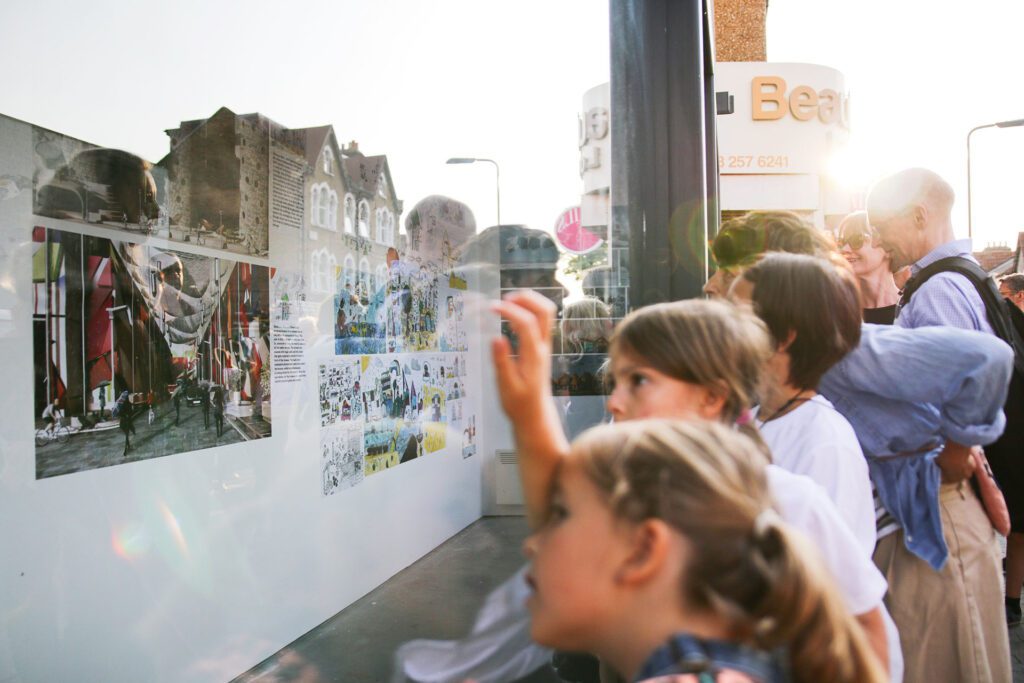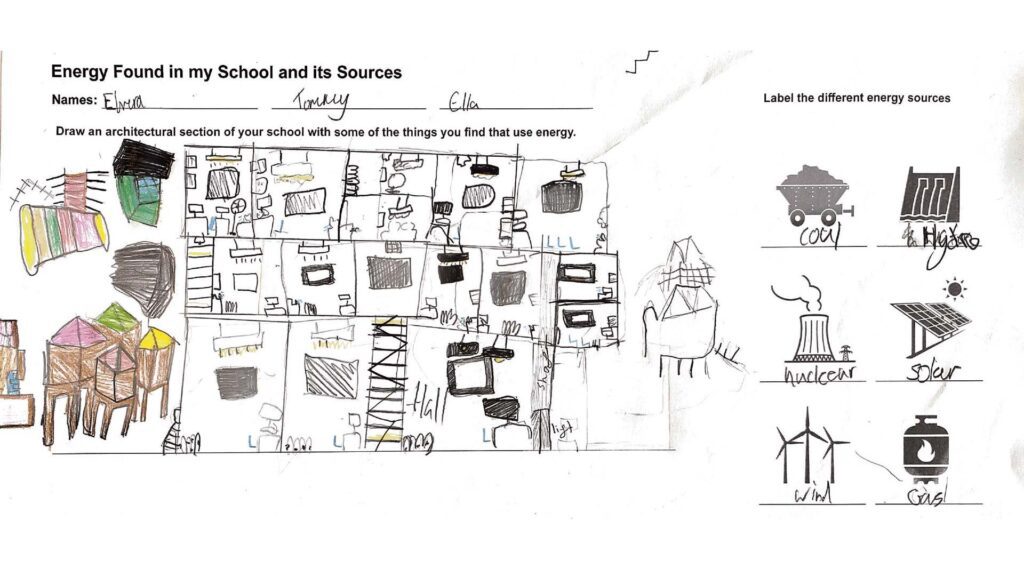1. Introduction by the teachers
Classroom teachers, using teaching resources provided by CCAC, teach the children about climate science and the causes and effects of global warming.
Using the ‘What is Design?’ resource children learn about what designers do and the potential for innovative design to solve intractable problems.
Practising designers then join the class
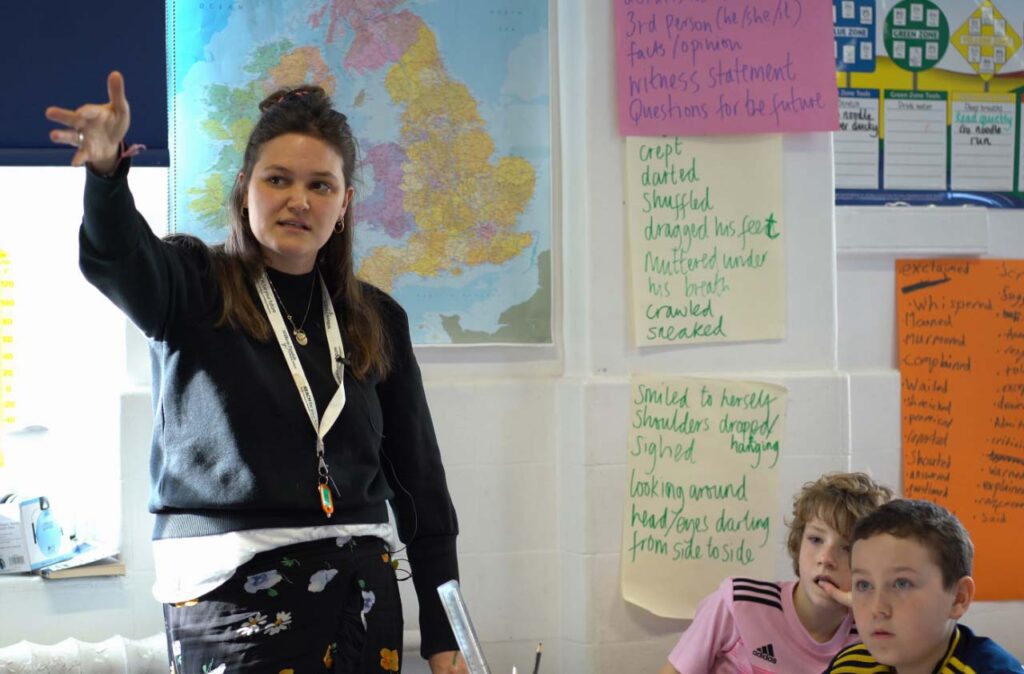
3. Scenario Settings
Children imagine their situation and write scenarios set in 2050, envisaging life in a climate changed world – hot, cold, or wet.
A school scenario:
“The UK has turned very hot and dry. There has been a brood of cobras and they are getting away. But luckily we discovered a plant that’s juice is poison. But it is bad for children’s skin so this school will protect them from the cobras by building a large wall. They farm camels and take water from their humps. They also gather cactus juice for a treat. They have two sandstorm safety rooms that fit up to 70 people. The school has 120 children and 20 teachers.”
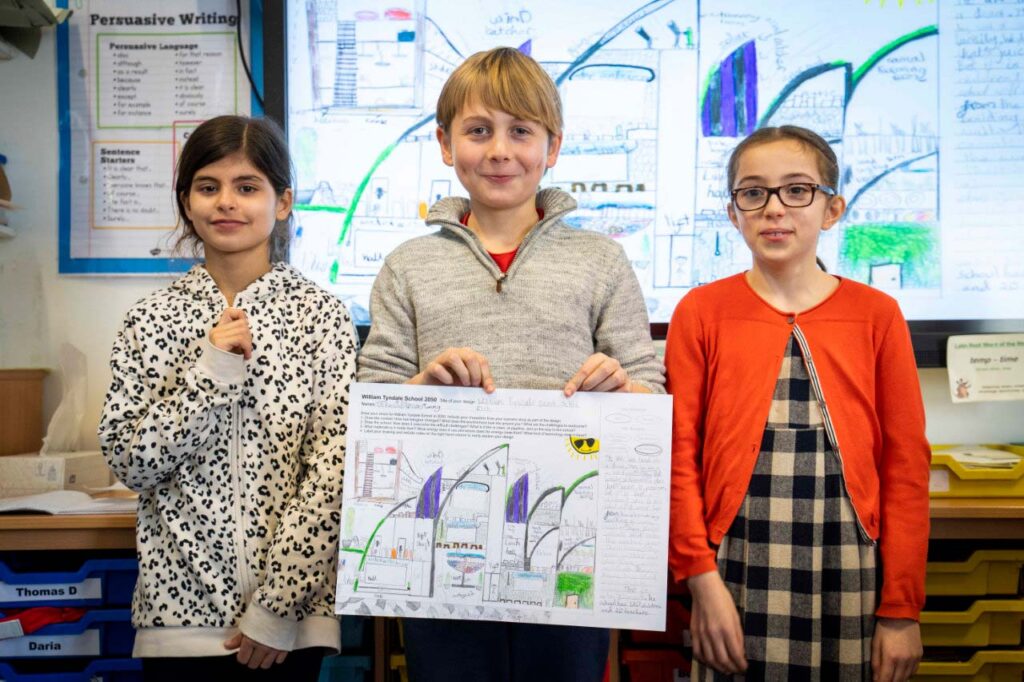
4. Children’s designs
In small teams, children prepare their designs for, in this case, a school in its climatic setting in 2050, prompted and guided by teachers and designers.
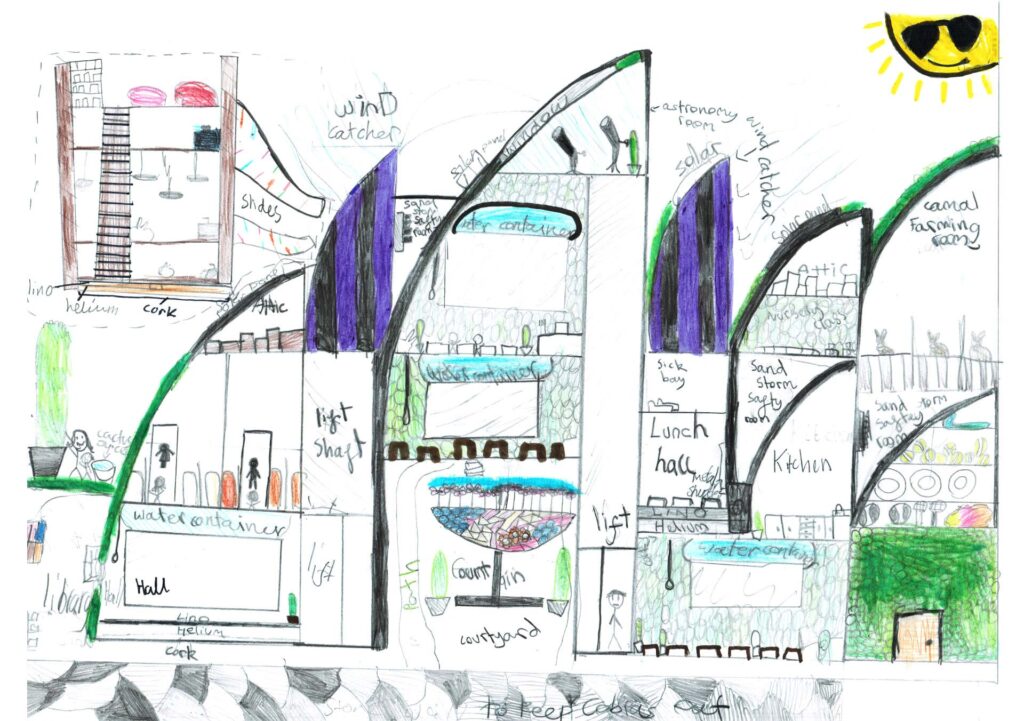
5. Presentation
Children present their designs to a small expert panel and the designer. The panel selects representative concepts for further professional elaboration by the designer.
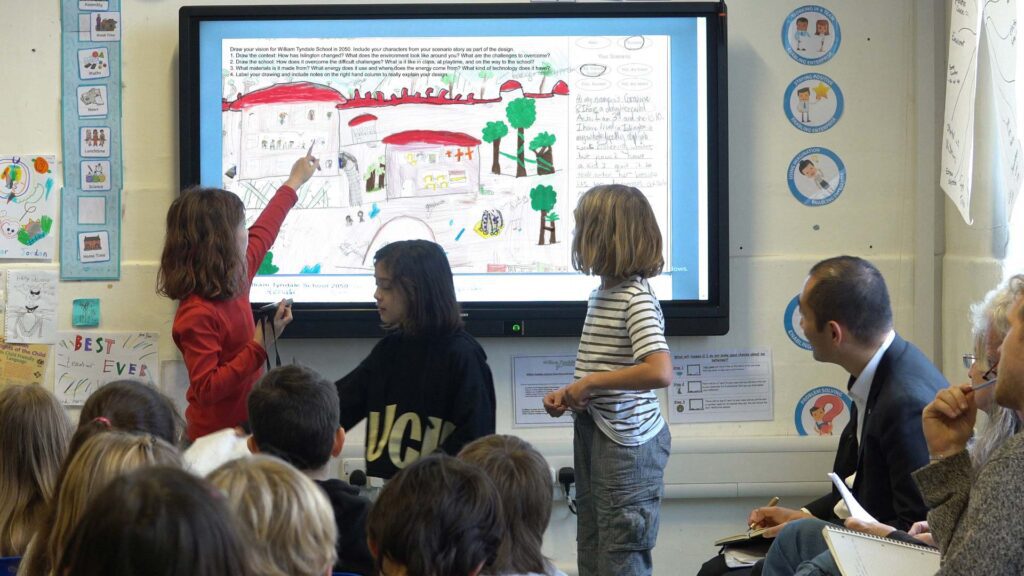
6. Professional design
The representative designs are developed and elaborated in the designer’s studio with, where possible, interaction and visits from the children.
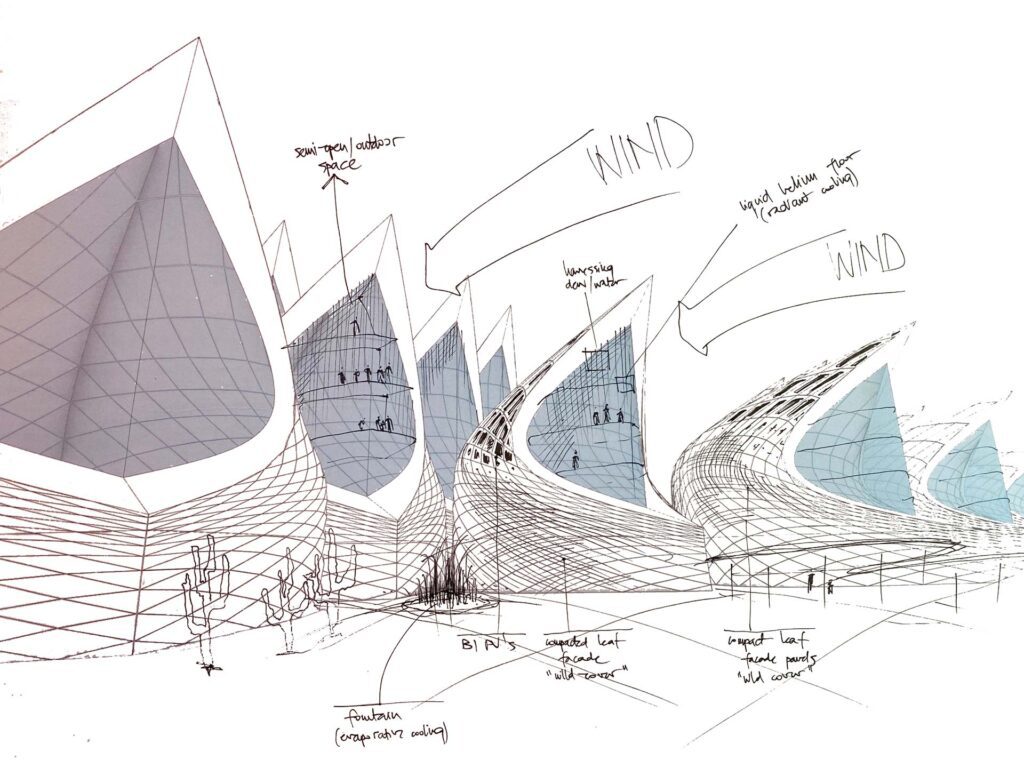
7. The reveal
A few weeks later the designers, teachers and children reassemble with parents, governors, guests, and representatives of the local community The designer runs through the children’s concepts and the work that his studio has carried out, using cutting edge digital technology, on the identified schemes.
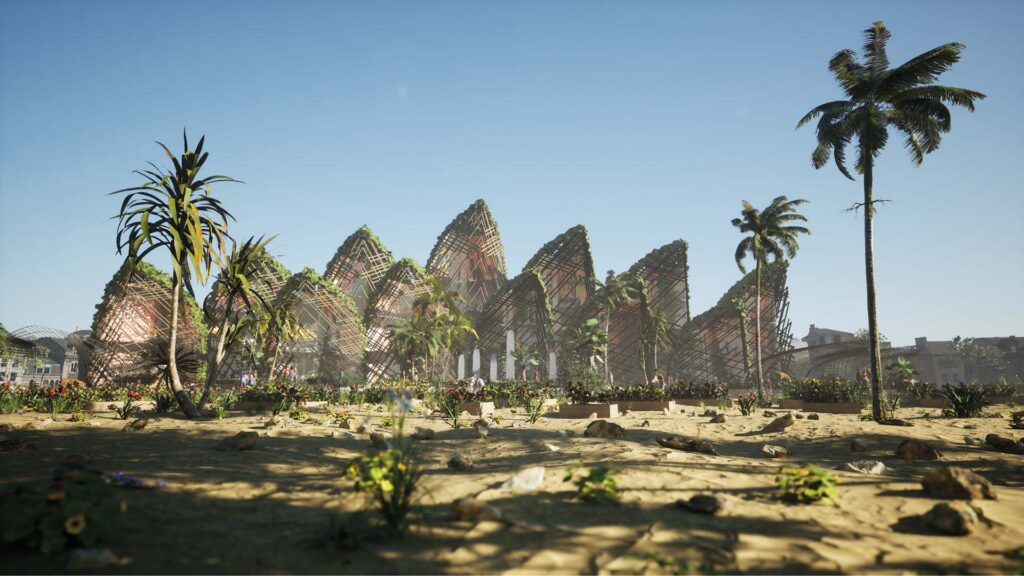
8. Display
All concepts go on public display.
